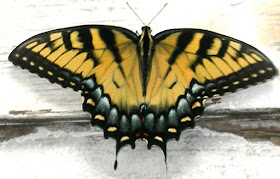Philosopher and keyboard artist Ervin Laszlo can help you answer this question. According to
a recent piece at the Huffington Post:
You aren't a "true" scientist if you "confound the record of a religious experience with the meaning of that experience". Hmmm. Whose meaning?
You aren't a "true" scientist if you "judge a religion by the literal veracity of the sayings, episodes, and injunctions contained in its doctrines". Hmmm. OK, we aren't to pay any attention to what the religion teaches.
A "true" scientist would be "reasonably certain...that there are aspects and planes of human experience that far transcend the limits of everyday experience, and they ["true" scientists] would seek to understand that experience". Ah, at last. Yes, the biology of hallucinations is fascinating and explains why hallucinogenic plants are involved with so many of the world's religions. In a pre-scientific world such experiences would be taken as absolute proof of the supernatural, but now we know it's brain chemistry. And have these experiences provided any profound insights into human nature and the natural world? Alas, no.
Well, by now you get the idea, you are not a "true" or "genuine" scientist if you don't simply accept the religious experience at face value rather than saying "your brain was deprived of oxygen".
But this is what really rubs my rhubarb. Any scientist who doesn't agree with Laszlo in neither a "true" or "genuine" scientist. It is to laugh. Only a desperately irrelevant philosopher would use such a rhetorical device and provide us with such a slipshod, second rate contribution to the problem of sorting out the science and religion problem. Stick with the keyboard Laszlo; you're giving philosophy a bad name.

 After thinking about parasitic plants all week, it only seemed natural to display one for as the FFF. Mostly you don't think about mistletoes as having very showy flowers, but that's because many of us are more familiar with mistletoes in the Viscaceae. In Australia mistletoes are members of the Loranthaceae, and they often have a striking display of colorful flowers that attract nectar feeding mistletoe birds and
After thinking about parasitic plants all week, it only seemed natural to display one for as the FFF. Mostly you don't think about mistletoes as having very showy flowers, but that's because many of us are more familiar with mistletoes in the Viscaceae. In Australia mistletoes are members of the Loranthaceae, and they often have a striking display of colorful flowers that attract nectar feeding mistletoe birds and 











